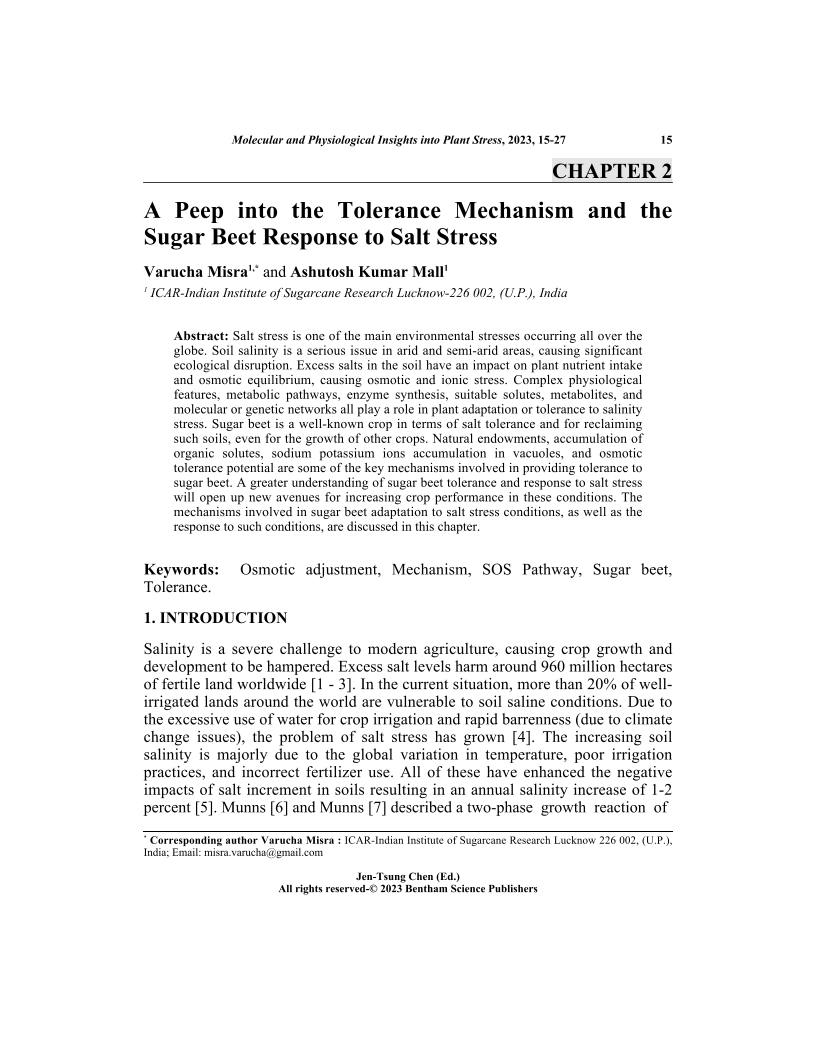A Peep into the Tolerance Mechanism and the Sugar Beet Response to Salt Stress

- Authors: Varucha Misra1, Ashutosh Kumar Mall2
-
View Affiliations Hide Affiliations1 ICAR Indian Institute of Sugarcane Research Lucknow-226 002, (U.P.), India 2 ICAR-Indian Institute of Sugarcane Research Lucknow-226 002, (U.P.), India
- Source: Molecular and Physiological Insights into Plant Stress Tolerance and Applications in Agriculture , pp 15-27
- Publication Date: November 2023
- Language: English
A Peep into the Tolerance Mechanism and the Sugar Beet Response to Salt Stress, Page 1 of 1
< Previous page | Next page > /docserver/preview/fulltext/9789815136562/chap2-1.gif
Salt stress is one of the main environmental stresses occurring all over the globe. Soil salinity is a serious issue in arid and semi-arid areas, causing significant ecological disruption. Excess salts in the soil have an impact on plant nutrient intake and osmotic equilibrium, causing osmotic and ionic stress. Complex physiological features, metabolic pathways, enzyme synthesis, suitable solutes, metabolites, and molecular or genetic networks all play a role in plant adaptation or tolerance to salinity stress. Sugar beet is a well-known crop in terms of salt tolerance and for reclaiming such soils, even for the growth of other crops. Natural endowments, accumulation of organic solutes, sodium potassium ions accumulation in vacuoles, and osmotic tolerance potential are some of the key mechanisms involved in providing tolerance to sugar beet. A greater understanding of sugar beet tolerance and response to salt stress will open up new avenues for increasing crop performance in these conditions. The mechanisms involved in sugar beet adaptation to salt stress conditions, as well as the response to such conditions, are discussed in this chapter. nbsp;
-
From This Site
/content/books/9789815136562.chap2dcterms_subject,pub_keyword-contentType:Journal -contentType:Figure -contentType:Table -contentType:SupplementaryData105

